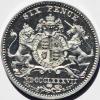-
Posts
146 -
Joined
-
Last visited
-
Days Won
2
Content Type
Profiles
Forums
Events
Downloads
Store
Gallery
Articles
Everything posted by 1887jubilee
-
Dear Jaggy
I have been struggeling with the 1887 sixpences for several years. I am not worried about all the R/V R/I or JEB on trunk, these are the basics from Davies. I am concerned about The filled crown on the reverse which seems to have two obverse dies. I am listing 7,8,9,10 obverse varieties of R/I inc A/A. I am worried about the different obverses that go with type three reverse and indeed the two main varieties of type 3 reverse. Would you be a good person to talk to? Looking at your profile picture you seem to know a bit about 1887 and wonder if you got anything from the sale of Alfred Bole sixpences sold by DNW.








